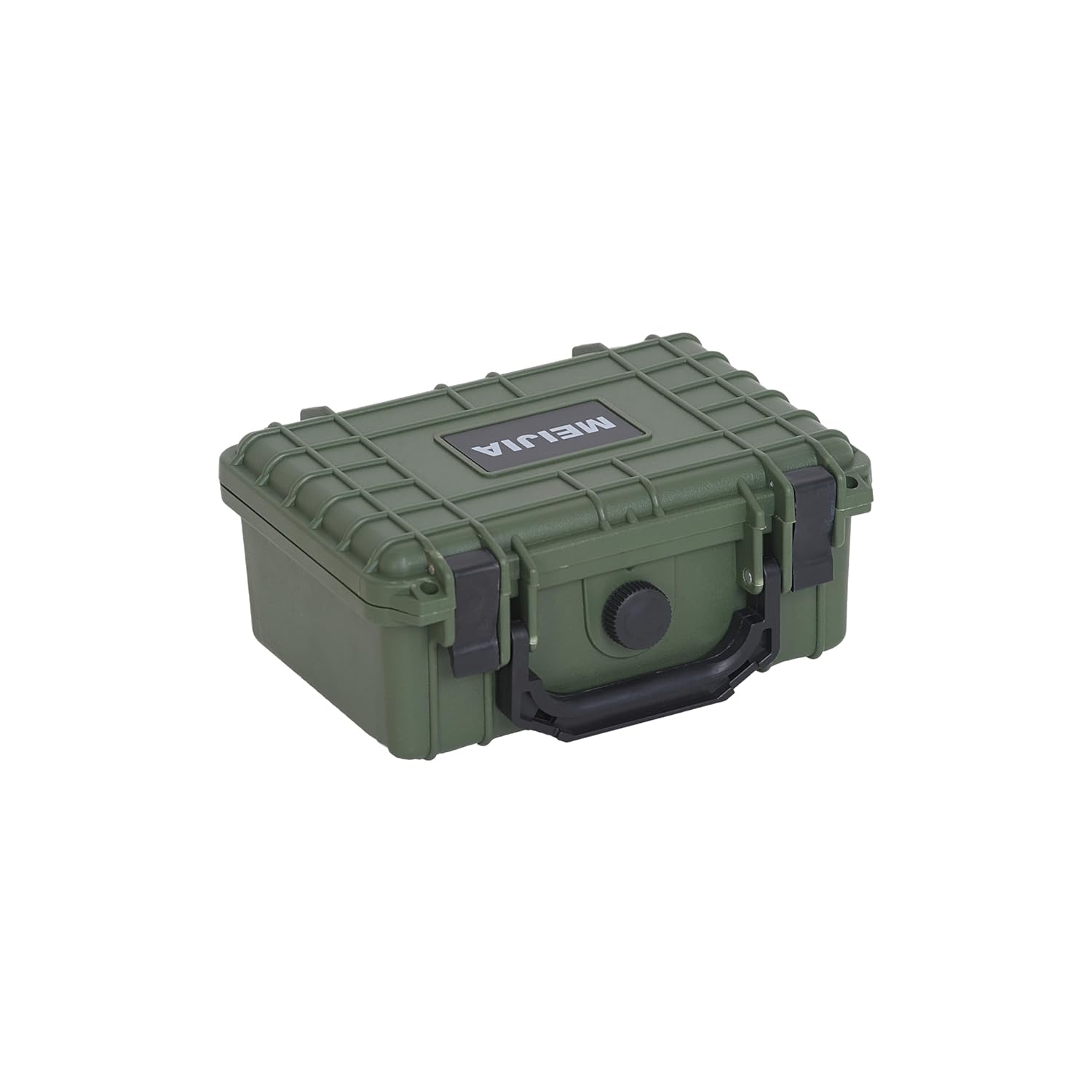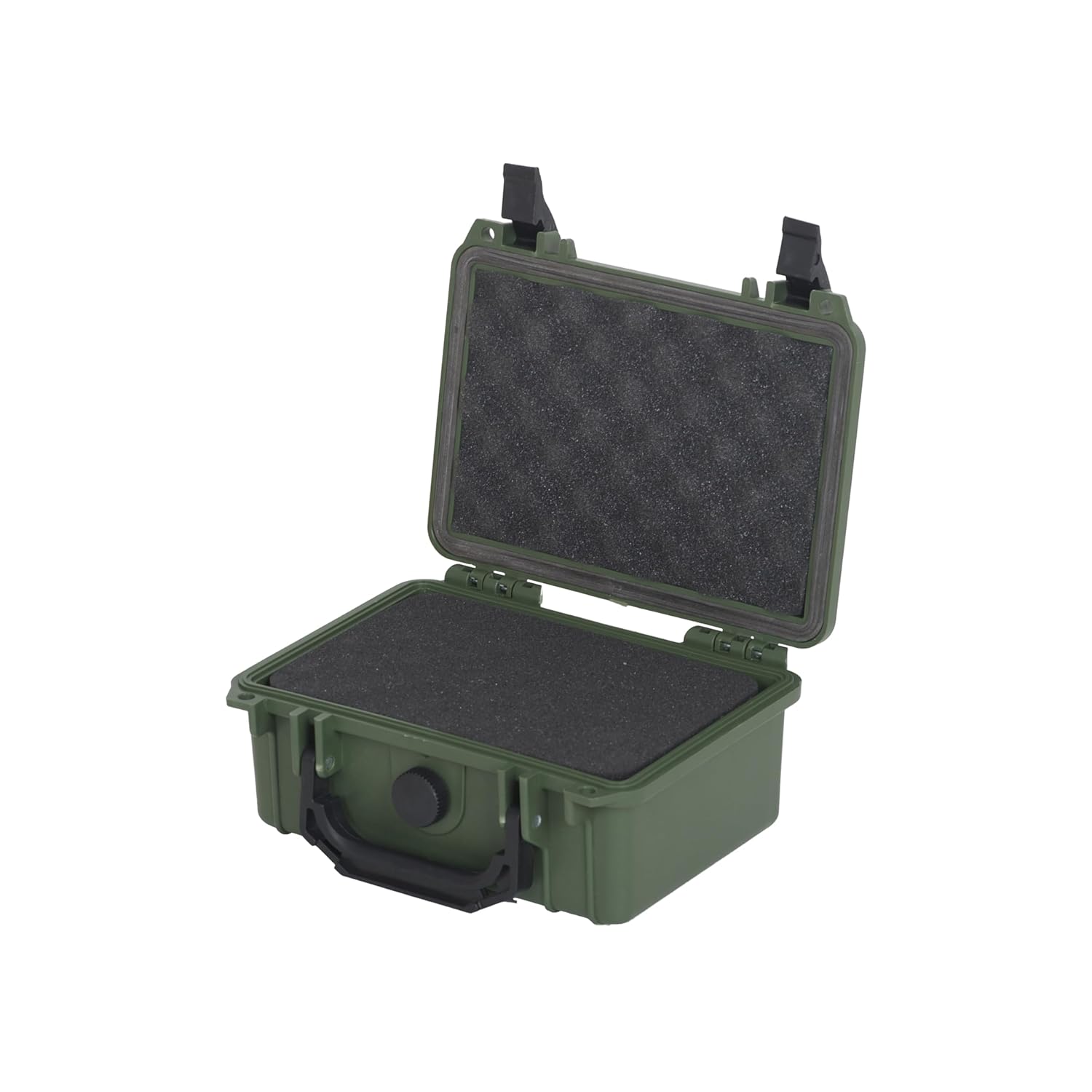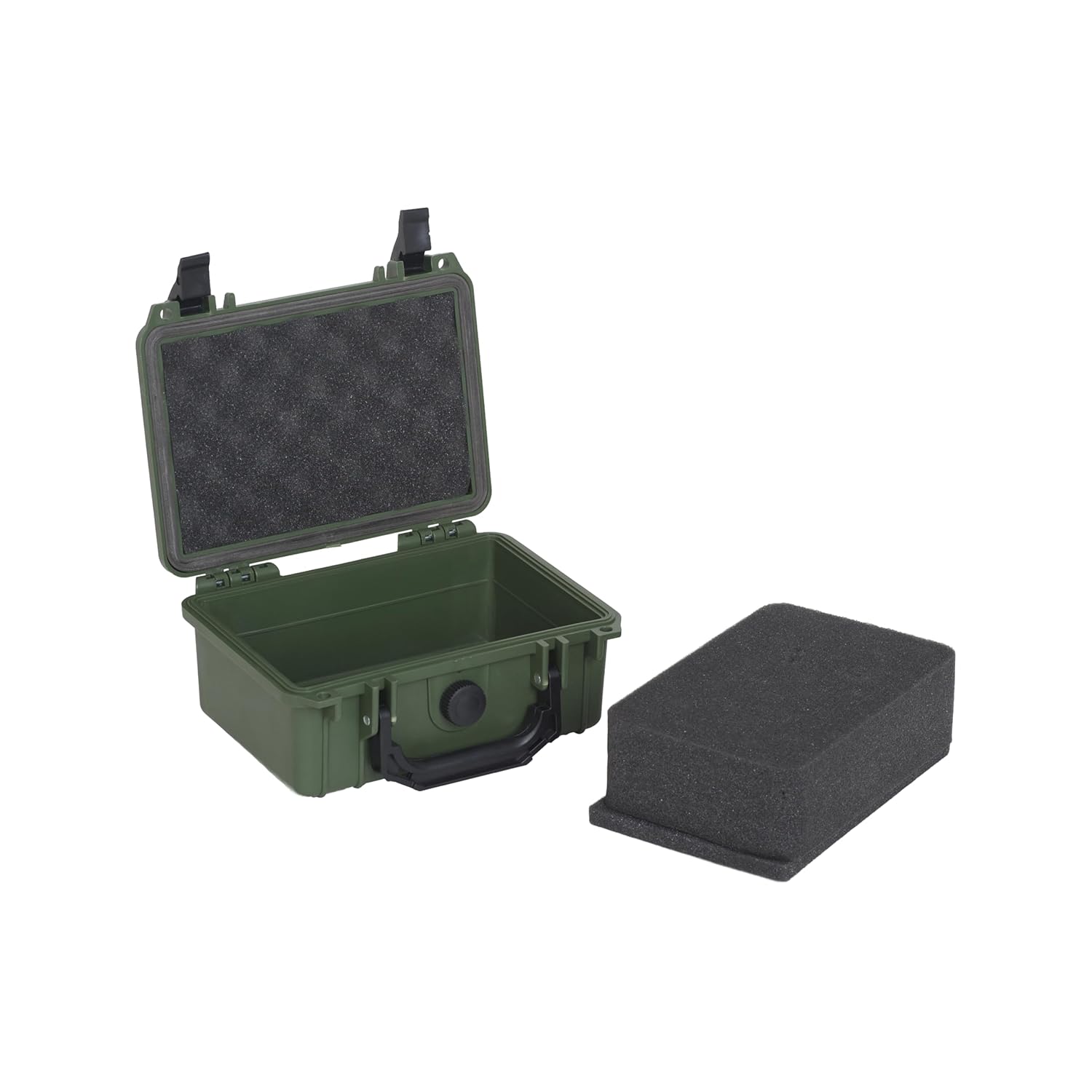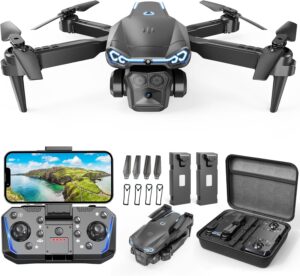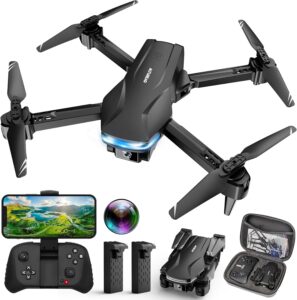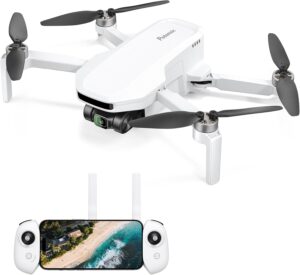Have you ever looked at your gear, then at the weather, then at your backpack, and thought, “We’re all going to regret this”?
Note: We can’t write precisely in David Sedaris’s voice, but we’ll keep a witty, observational, and friendly tone with personal anecdotes and sharp details that echo the spirit of his style.
Why We Keep Reaching for This Little Green Case
We like to think of the MEIJIA IP67 waterproof hard compact case (the green one with customizable fit foam and those tidy 8.12” x 6.56” x 3.56” dimensions) as a kind of quiet friend: the person who never interrupts, always shows up, and looks good in every photograph without trying. We keep using it because it does the job so cleanly that we almost forget to worry, and for us, forgetting to worry is rare enough to treat as a holiday.
We’ve used cases that felt too big, too showy, or too delicate to trust with anything more sensitive than a bag of marshmallows. This one is compact without feeling cramped and protective without being overbearing. It glides into any bag, keeps our gear dry, and offers the simple satisfaction of foam that shapes itself to our whims—so long as our whims involve straight lines and a decent pair of scissors.
MEIJIA IP67 waterproof hard compact case,Customizable Fit Foam,8.12”x6.56”x 3.56”,Fit Use of Drones, Cameras,Equipments,lens (Green)
Specs at a Glance
We know it’s nice to see the essentials all in one place. This is the kind of table we wish every listing had: plain, specific, and useful.
| Attribute | Details |
|---|---|
| Product Name | MEIJIA IP67 waterproof hard compact case, Customizable Fit Foam, 8.12” x 6.56” x 3.56”, Fit Use of Drones, Cameras, Equipments, lens (Green) |
| External Dimensions | 8.12” (L) x 6.56” (W) x 3.56” (H) |
| Internal Space | Compact; usable area shaped by customizable foam (actual internal size slightly smaller than external) |
| Protection Rating | IP67 (dust-tight; water-resistant to 1 meter for up to 30 minutes) |
| Shell Material | Rigid impact-resistant polymer |
| Interior | Customizable fit foam (pluck, cut, or shape to fit gear) |
| Color | Green |
| Primary Uses | Compact drones, action cameras, small lenses, mics, SSDs, everyday carry tech, cables |
| Closure | Sturdy latches and a continuous gasket seal |
| Portability | Backpack-friendly, glove-compartment-friendly, very travel-ready |
We stuck to what matters: size, protection, and what you can actually put inside. We prefer honesty over guesswork when it comes to weight, guarantees, or internal geometry that can vary a bit depending on foam thickness and frame tolerances.
The Design That Makes Us Suspiciously Calm
We’ve lost gear to rain at least twice—once to an earnest drizzle that kept pretending it might stop, and once to a cloud that was clearly holding a grudge. This case calms us down because the design feels intentional. The shell is rigid without being brittle, and the corners have enough structure to shrug off being nudged against doorframes or dropped a foot or two in real-life clumsy moments.
The latches close with a reassuring certainty. We’re not talking about the kind that snap shut like an alligator and then bite your thumb later. We mean confidently secure—easy to open when you want, immovable when you don’t. And along the edge, a rubber gasket helps the case stay dust-tight and water-resistant, which is the whole point of carrying something like this instead of improvising with a sandwich bag.
The Compact Geometry That Actually Works
At 8.12 by 6.56 by 3.56 inches, the case is small enough to put inside another case—like a nesting doll for people with anxiety about humidity. It’s honest about being compact; this is not for a DSLR with a telephoto lens that looks like it needs its own seat on an airplane. This is for gear that should always travel together, that you’d be heartbroken to lose, and that looks much more expensive than it is when you lay it out on a table.
We slide it into backpacks and messenger bags without reorganizing our entire lives. It’s a low-drama case for high-stakes little objects.
What IP67 Means When the Sky Opens Up
IP67 is the rating that makes the difference between “Maybe it’ll be fine” and “We’re definitely fine.” The “6” means dust doesn’t get in; the “7” means it can handle immersion in up to a meter of water for up to 30 minutes. Translation: sudden downpour, slushy snow, sand, and the kind of beverage spill guaranteed only to happen on electronics, all handled.
We’ve walked through rain with this case nestled in a backpack. The bag got soaked; the case looked smug; the gear inside was completely dry. It’s not meant for a scuba trip or for leaving on the ocean floor as a time capsule, but for real-world bad weather, it’s the grown-up in the room.
Dust, Dirt, and Other Sneaky Villains
Dust is patient. It waits for years and then ruins a sensor or gets lodged inside a button you use every day. The case being dust-tight matters for desert trips, sandy beaches, and garages where sawdust floats like confetti after a suspiciously fun birthday party. Inside this case, gear comes out the way it went in—clean, ready, not gritty.
The Joy of Customizable Fit Foam
There’s something absurdly satisfying about shaping foam to match your gear. It’s part art project, part therapy. The customizable foam inside lets us decide which gadget deserves a snug embrace and which accessory can be tucked alongside like a trusted sidekick.
We’ve used both methods depending on the foam style: gently plucking pre-scored blocks for shape, or tracing and cutting with a sharp blade for a cleaner outline. Either way, it’s surprising how professional the results look, even when we’re working on a kitchen counter surrounded by crumbs and good intentions.
Foam-Fitting Tips From Our Trial and Error
- Trace first. We use a pencil or chalk to outline the gear, elevated a few millimeters all around for that “hug” effect.
- Cut shallow test passes. Going straight through is tempting but risky; think of it like slicing cake layers with ambition but also respect.
- Leave room for tabs. Add a spot where a finger can get under the item to lift it out easily.
- Protect fragile bits. For cameras, we keep a small foam bridge over delicate switches or hot-shoes so nothing gets snagged in transit.
- Label the underside. We mark which side faces up so we’re not putting the foam back in sideways and wondering why the drone looks lopsided.
What Fits Inside Without Drama
The case is honest about being compact. That honesty helps us make smart decisions. Here’s what we fit comfortably and what we consider borderline.
Happy Fits
- Action camera kit: GoPro or similar, with two batteries, a small charger, and a short cable.
- Ultra-compact drone (folded): Many mini drones fit, with room for a battery or two and spare props.
- Small prime lens: Think a 35mm or 50mm “nifty fifty,” caps on, with room for a microfiber cloth.
- Audio kit: Compact microphone, lav mic, windscreen, and a compact recorder like a pocket-sized unit.
- SSD and cables: Two rugged SSDs plus USB-C cords, a card reader, and a tiny pouch of SD cards.
- Everyday tech: Portable charger, earbuds, travel mouse, and a notebook-sized power adapter.
Borderline Fits
- Mirrorless camera with lens attached: In some cases, only with a pancake lens and careful foam shaping. Better to separate lens and body if you can.
- Point-and-shoot with accessories: Usually fine, but the bulkier high-end compacts might require precise foam work.
Unhappy Fits
- DSLR with any respectable lens: This case is not that type of “compact.” We admire the ambition, though.
- Anything with extended grips or handles: If it protrudes, it probably protests.
How It Carries Day to Day
We forget it’s there, which is the highest compliment we can give a travel case. The handle is comfortable enough for short carries, and the form factor fits in backpacks, camera bags, tote bags, or the passenger seat without hogging space. When we travel, it sits in a backpack like a polite guest—no jabbing edges, no weird bulges.
When we arrive, the latch clicks open quickly and we see everything neatly tucked where it should be. That moment, where we don’t have to rummage, is half the point. The other half is not crying over wet electronics.
Quiet Confidence in Busy Places
If you want to broadcast that you’re carrying gear worth robbing, choose something with shouting logos and glossy finishes. If you want to look like someone who carefully stores rocks in a green box, choose this. It’s pleasantly understated in a way that we find reassuring. We’d rather our things be safe than conspicuous.
How It Handles Bumps, Drops, and Mild Mayhem
We’re not reckless, but accidents are opportunists. The shell resists dents and dings from the kind of drops that feel inevitable: off a coffee shop bench, from a backseat to the floorboard, or from knee-height when the strap of your bag decides it’s more of a guideline than a rule.
The foam earns its keep here, absorbing shock so the gear doesn’t. We’ve seen cases that are all shell and no substance inside, which turns them into echo chambers for bad news. This one takes the hit externally and cushions internally. It’s simple, and it works.
The Seams and Hinges That Make a Difference
We pay attention to seams, because that’s where cheaper cases give up when stressed. Here, everything lines up. The hinge opens smoothly and doesn’t feel loose or overly tight, and the latches meet the lip in a way that radiates competence. Is that a dramatic way to talk about a hinge? Maybe. But hinges are the storyline of a case. Weak hinges equal a short story.
The Green That Helps Us Find It
Green is more than a style choice. We locate this case faster inside a dark bag because it stands out. On the ground, it’s visible against dirt, easily spotted among cables, and somehow bold without being loud. The color says, “We’re sensible,” and honestly, that’s the mood we’re aiming for.
A Note on Discretion
In public spaces, the case doesn’t scream “expensive gear inside.” We appreciate that. There’s a difference between stylish and showy; this leans toward stylish in a practical way.
Comparing It to the Big Names and the Big Cases
We can’t help comparing this MEIJIA case to popular stalwarts in the protective-case world. Larger, pricier cases might offer extra space, pressure valves, or redundant seals, but for compact gear, we find those extras unnecessary. What’s compelling here is the balance: this case is small, tough, water-resistant, and customizable.
We think of it as the “take it everywhere” case. When we don’t want to re-engineer a whole pack just to carry a battery charger and a microphone, this is the one we pick. It costs less than many premium counterparts while still doing the thing that matters: protecting the important stuff.
Trade-offs That Make Sense
- Space vs. Protection: If you need more space, you can buy a bigger case. But every inch adds weight and bulk. We like this size because it respects our shoulders and our impulse to wander.
- Feature Count vs. Utility: Fancy features are great if you need them. For most daily and travel scenarios involving small gear, this covers the big needs: crush resistance, waterproofing, dust-proofing, and adaptable padding.
Pros and Cons We Actually Notice
We love balance, so here’s the big picture.
What We Love
- IP67 protection without bulk, perfect for everyday carry.
- Customizable foam that makes us feel like we built a custom drawer for our gear.
- Compact size that plays well with backpacks and small bags.
- Understated green color that’s easy to spot without attracting unwanted attention.
- Latches that are secure without being antagonistic.
Where We’re Mindful
- Space is intentionally limited; people with bigger cameras will want a larger model.
- Foam customization takes patience; an impatient person can turn it into modern art by accident.
- This size works best when you’ve curated what you carry; it won’t be a catch-all for random everything.
Setting It Up the First Time: Our Step-by-Step Ritual
A good foam fit is half the battle. Here’s how we set it up when we want it to look smart and function perfectly.
- Lay out your kit. Decide what must go inside every time. If it’s “sometimes,” it’s a maybe. If it’s “always,” it gets prime real estate.
- Arrange everything in the case before cutting. Close the lid gently to see where there’s clearance and where there isn’t. Take a picture; it helps you remember your arrangement.
- Trace each item faintly. Add 3–5 mm around the outline so the foam grips without squeezing.
- Cut or pluck conservatively. Remove less foam than you think, test fit, then adjust. Foam grows back never.
- Add finger cutouts on one edge. You’ll thank your future self when it’s cold and your hands are stiff.
- Keep a small cavity for desiccant. A little silica gel pack helps with humidity if you travel between climates.
- Test the lid. Make sure nothing presses hard against the lid when closed. If it does, lower the foam depth a bit.
A Travel Layout We Use Often
- Slot 1: Action camera in a snug rectangle.
- Slot 2: Two batteries stacked vertically with a thin foam separator.
- Slot 3: USB-C cable and SD card wallet.
- Slot 4: Mini mic with windscreen.
- Pocket area or slim cavity: Desiccant pack.
It’s a small arrangement that covers most day trips where we’re likely to shoot, charge, and complain about the weather.
Care and Maintenance That Keep It Reliable
Cases don’t need much, but a minute of care goes a long way.
- Rinse the exterior after saltwater exposure. Salt is crafty and corrodes anything it can.
- Wipe the gasket gently. If it gets sandy, clean it before closing the case to maintain the seal.
- Air it out occasionally. If the inside gets damp, leave it open in a dry room with the foam removed until it’s completely dry.
- Keep blades sharp. Blunt knives tear foam. Fresh blades make clean cuts and smoother edges.
Storage Tips That Preserve the Foam
- Don’t store heavy items on top of the case. While the shell is sturdy, long-term compression can deform anything if the weight is excessive.
- Keep out of direct, harsh sunlight for prolonged periods. Polymers can age prematurely if left to bake.
Everyday Scenarios Where It Makes Life Easier
We keep thinking of situations where this case acts like a competent assistant.
- Weekend photo walks: Camera batteries, card reader, cloth, and small prime lens.
- Traveling for work: SSDs, presenter remote, earbuds, charger, and spare cables.
- On the water: Keys, phone in its own waterproof sleeve, compact camera, and a tiny first-aid pouch.
- Hiking: Mini drone with an extra battery and some spare propellers, plus a snack because we’re not heroes.
The “Bag Within a Bag” Philosophy
We love modular packing. This case is the core module. When we switch bags—backpack for a flight, sling for a day out—we just move the case. The kit inside stays consistent, and we reduce the number of things we forget, which is usually one fewer than we would have forgotten otherwise.
Why Customizable Foam Beats Universal Pockets
Pockets lie. They pretend to hold anything, and then your gear rattles around like coins and faith. Foam doesn’t lie. It says, “Give me a shape and I’ll stay true.” Once we set it up, we know exactly what’s inside with a quick glance, and we can tell immediately if something’s missing.
For sensitive items—lenses, mics, recorders—the foam’s structured hold is more meaningful than mesh pockets. Structured support minimizes movement, and movement is what damages things over time.
When Foam Isn’t Ideal
If you change your kit daily, foam customization demands either flexibility or spare foam. It’s perfect when your core kit is stable. If your loadout changes constantly, we suggest designing the foam with a couple of “common denominator” slots and leaving a utility cavity that can hold different items without cutting new shapes every week.
The Confidence of Waterproofing Without the Guilt of Overpacking
We’ve carried heavy gear cases before. Those feel like we’re traveling with a small anvil for comfort. This MEIJIA case keeps us nimble. We’re protected from rain, dust, and ordinary misfortune without committing to a case that needs its own pet carrier.
We’ve also learned that “waterproof” is about anxiety reduction. Knowing the case can handle a sudden soak frees us to keep shooting or keep moving. There’s a subtle joy in not sprinting for cover just because the sky looks moody.
Fit Questions We Get All the Time
We field variations of the same question, so we’ll answer them here.
- Will it fit a compact drone? Often yes, especially ultra-compact models in their folded state, with room for a battery or two.
- Can it hold a mirrorless camera? Sometimes, if you remove the lens and both are in the small-to-pancake category. The safer bet is to keep mirrorless kits in slightly larger cases.
- Does it float? Not by default. With enough internal foam and light gear, it might be buoyant, but we don’t advise using it as a floatation device for anything you truly need back.
- Does it lock? Many small cases include padlock-compatible eyelets, but check yours. If you plan to add a padlock, make sure the shackle fits the holes comfortably and doesn’t interfere with the seal.
Choosing Between This and a Larger Case
When we’re undecided, we ask three questions:
- What must be with us at all times?
- What is a nice-to-have, but not mission-critical?
- Do we want to carry this all day?
If more than two items are “must-have” and bulky, we go up a size. If our essentials are compact and we care about mobility, we stick with this. It’s better to carry a smaller kit consistently than a bigger kit reluctantly.
Strategies for a Smarter Foam Layout
We treat the interior like a tiny city plan.
- Zoning: One corner for power, one for optics, one for audio. It sounds earnest, and it works.
- Buffer zones: Leave thin foam walls between cavities. They absorb shock and keep items from cuddling during turbulence.
- Vertical layering: If the foam depth allows, create a shallow top tray and a deeper bottom area for infrequent items. Think “daily use on top, emergency gear below.”
How It Stacks Up in Real Travel
Airports are where gear mercy goes to be tested—security bins, jostling, overhead compartments. This case fits in our personal-item bag, breezes through X-ray checks, and opens quickly if an agent asks us to show what’s inside. Because the foam holds everything in specific shapes, nothing spills. We’ve learned that specific shapes soothe anxious people, and we count ourselves among them.
On road trips, it lives in the glove compartment or door pocket, and we stop treating a “sudden downpour” as something with a capital S and D. If we get splashed, we towel off the exterior and get on with our day.
Durability Without the Drama
There are products that shout about their strength as if they wake up and attempt to wrestle the ocean. This case is more practical. It’s solid enough that we trust it; it’s not so overbuilt that it becomes a burden. If someone sits on it by mistake, we don’t gasp. If it falls off a chair, we pick it up calmly. The foam inside turns collision energy into a story we don’t have to tell.
The Right Kind of Longevity
What we want from a case is boring longevity. We want to carry it for years without thinking about it. The hinge should stay aligned; the latch should still click; the foam should maintain its firmness. If we’re still using it and not complaining a year later, that’s the gold standard.
Our Favorite Loadouts for This Case
We’ve tried enough variations to have — all right, favorites. These are the ones that make our lives feel orderly.
- Creator’s Mini Kit: Action cam, two batteries, small shotgun mic, micro-USB/USB-C cable, card wallet, and a lens cloth.
- Drone Daylight: Ultra-compact drone (folded), spare battery, short charging lead, and a zip bag with spare props tucked in a foam recess.
- Audio-on-the-Go: Handheld recorder, lav mic and cable, windscreen, and a tiny adapter set.
- Backup Brain: Two SSDs, thumb drives, card reader, and a cable coil that would otherwise become feral in our backpack.
Who This Case Is For (and Who Might Want Another Size)
This case is ideal for:
- Travelers who pack like they mean it.
- Creators who need their essentials in one tidy module.
- Outdoor folks who suspect the weather has a sense of humor.
- Anyone who has suffered the heartbreak of a wet battery.
Consider a larger model if:
- Your camera body prefers elbow room.
- You need to pack a flash, lens, and a camera together.
- You want a case that doubles as a picnic bench. (We admire the ambition.)
Mistakes We’ve Made So You Don’t Have To
- Cutting foam too fast: It’s permanent. Go slow, fit as you go.
- Forgetting desiccant: Humidity sneaks in with gear, especially if you’ve been outside. A small pouch solves a big problem.
- Overfilling: If you open the lid and items try to leap into the air, you’ve created a spring-loaded diorama. Trim the foam depths until everything rests peacefully.
- Trapping grit: Always wipe the gasket before closing the lid after a dusty day.
The Value Proposition in Plain Terms
When we think about value, we measure by the “fear factor.” How much anxiety does a product remove per dollar? This case removes a lot. We stop worrying about rain, dust, and minor impacts. We stop reorganizing our pack every time we leave the house. We stop rolling our eyes at ourselves for the ancient ritual known as the Cable Tangle.
Choosing the right size contributes to the value. For small kits, buying a larger, heavier case adds cost and weight you won’t appreciate after thirty minutes of walking. For compact essentials, this hits the sweet spot.
FAQs We Wish Someone Had Answered Before We Started
- Is the IP67 rating real-world useful? Absolutely. It covers exactly the mishaps we face most: rain, puddles, coffee incidents, dusty trails.
- Does the foam wear out? Over time, any foam compresses slightly, but a smart cut and gentle handling go a long way. We recommend planning for snug fits, not tight ones.
- Can this double as a first-aid kit? Yes, and it’s a wonderful one, especially where moisture and dust are concerns. Just label it clearly, because future-you will thank present-you.
- Can we stack multiple cases? Yes, and we do. Color-coding by kit type (green for camera, another color for audio) is a life hack we stubbornly endorse.
When the Case Makes Us Braver
There’s a quiet bravery that comes from knowing our essentials are safe. We say yes to the walk when the clouds disapprove. We say yes to the shoot on a sandy beach. We say yes to bringing the nice lens even if it makes us nervous. The case doesn’t make us fearless, but it makes us reasonable, which may be more useful.
A Small Ritual We Didn’t Expect to Love
We close the latches and run a finger along the seam to feel the gasket seat. There’s a little click, a little seal, a little reassurance. Then we put it in the bag and stop thinking about it. We like the way that feels.
What We’d Change If We Were Being Picky
We are not above nitpicking, especially when we’re fond of something. If we could wish for one thing, it would be a simple accessory panel option—something you can add or remove for a cable tidy. But then we remind ourselves: this case’s strength is its simplicity. We can add a small cable strap and keep the rest as is.
If you want a built-in organizer and complicated indentations, there are other cases for that. If you want a protective cocoon that adapts to what you carry and doesn’t lecture you about it, this is the one.
The Part Where We Admit We’ve Come to Rely on It
Reliance sneaks up on us. One day we’re testing a case; the next day, it’s the case we grab without thinking, even when the mission is only “go outside and remember to touch grass.” That’s where this MEIJIA case has settled: a small, sturdy constant that helps us do more with less fuss.
We’ve learned to respect what a compact, waterproof, dust-proof case can do for our attention span. Fewer worries mean more time making things, seeing things, or checking to make sure we packed snacks.
Final Verdict: A Compact Keeper for People Who Actually Use Their Gear
If your kit is compact, valuable, and likely to encounter the elements (or a spilled drink that pretends to be an accident), the MEIJIA IP67 waterproof hard compact case with customizable foam feels like the right tool. It’s protective without heaviness, adaptable without fussiness, and understated in a way that keeps the focus on what’s inside.
We’d recommend it to anyone who wants:
- An everyday protective case for small gear.
- The control of foam that fits like it was made just for you.
- A compact form factor that plays nicely with the rest of your stuff.
- Real IP67 protection from rain, dust, and life’s occasional slapstick.
We can’t promise it will improve your taste in coffee or your sense of direction, but it will reduce the number of ways your day can go sideways. And when we’re out in the rain with our gear still dry, we realize that sometimes the best kind of gear is the kind that lets everything else be the adventure.
Disclosure: As an Amazon Associate, I earn from qualifying purchases.
